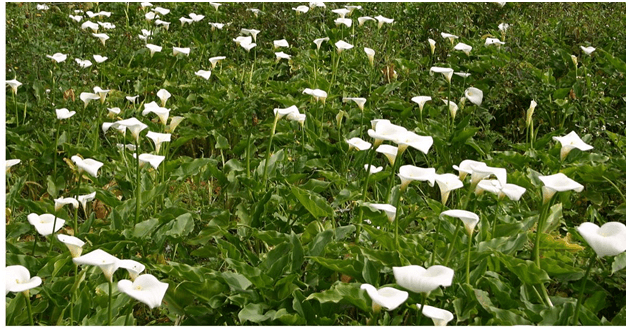
In the days when the Archives of Internal Medicine was one of the greatest general medicals journal in America, William Bean was its famed editor. Born in 1909 in Manila, he had studied at the University of Charlottesville in Virginia, served in World War II, became professor of medicine in Iowa city, and during his lifetime wrote 300 scientific articles and 500 book reviews.1
In his articles he wrote about the perils of missing the diagnosis of myocardial infarction;2 the origins of “Internal Medicine,” a concept derived from German medicine;3 the art of snoring;4 great editors of his time; 5 the history of pellagra and the contributions of Joseph Goldberger;6 Walter Reed and yellow fever.7 He also wrote about the environment, climatology, ecology, forestry, and landscape architecture;8 and about the early days of clinical research, the “roaring twenties” when alcohol was still prohibited, drinking astonishing in volume, whiskey notable for its badness, travel done mostly by trains—which were marvelous monsters with steam locomotives and had elegant Pullman dining cars—President Warren G Harding’s deification of mediocracy and illiteracy, and H.L. Mencken’s “thumping away at the Bible Belt as the Sahara of the Bozart.”9
Dr. Bean wrote about the moral responsibility in human experimentation, in teaching and helping rising generations of physicians, in writing and expressing oneself intelligibly, and in maintaining high standards.10,11 He voiced his ambivalence about the “overweening and crushing impact of the specialty boards,” which have “usurped the function of our universities” and “unfortunately spawned a strange parasite, the ambitious but immature specialist, more interested in the tinsels and trappings of his career than in his true work of becoming the best of physicians.”10,11
The journal he edited at the time did not suffer of the proliferation of specialist medical journals that now attract the best articles to the detriment of the general journals. The Archives of Internal Medicine published some of the best work emanating from America’s clinics and research laboratories, but also had medical humanities articles by excellent writers such as Michael Kelly,13 EP Scarlett,14 and Charles D. Aring,15 often prominently displayed in its front pages and not as an afterthought tucked away among announcements and advertisements.
Dr. Bean also took a leaf out of James Boswell’s “Life of Samuel Johnson”—in which we learn that the illustrious doctor “used to beguile the shining and solitary hours with all sorts of miscellaneous observations” such as engaging in chemical experiments, “watering and pruning a vine, at which those who may smile, should recollect that these are moments which admit of being soothed only by trifles.”16 It is in this spirit, “of dividing one’s attention equally between books and men”17 that Dr. Bean began thirty-seven years earlier, “rather casually,” to measure the rate of growth of his fingernails and toenails.
Beginning his observations in the month before Pearl Harbor and continuing them across nearly half of his life,17 he made small marks with an indelible stain or sharp small file, measuring the distance from the cuticle to the free edge of the nail. He found that toenails grew somewhat slower than thumbnails; and that over the years there was a somewhat slow and somewhat irregular decline in the rate of nail growth (from 116 to 148 days from cuticle to tip or 0.17 to 0.07 per day). He thought that this slowing, though imperceptible, was occurring in parallel with “the subtle graying of the hair, the slower pace of running walking or climbing stairs, and the encroachment of presbyopia to which he surrendered by getting bifocals at the age of 55.”16
Dr. Bean also mentioned that the known effect of a warm environment on promoting nail growth and of cold retarding it was now counteracted by the use of air conditioning and central heating. Growth slowed during an attack of mumps or measles, less so during influenza. It was not affected by geographical location or physical activity. Occasional little white spots, a small sublingual hematoma from bumps or injuries always moved at the same rate as the general nail growth.16 Dr. Bean also reviewed the findings of other curious investigators, dating back to 1871, under various conditions, in different countries, children, sheep and other grazing animals, the thin whale and the blue whale. He also referred to studies that debunked the alleged growth of hair and nails after death, all evidence showing that mitotic activity ceases and perceived growth is only apparent as soft tissues dry and shrink and expose more of the surface of the nail.16 Nail growth is slower in a hand paralyzed by a stroke or immobilized in a splint, as well as during starvation, lactation, or measles, but is apparently speeded up in nail biters.17 Finally, a simple fact worth taking away from all this is that nails grow by about 1mm every ten days.
References
- Obituary: William Bennett Bean, JAMA 1989, 261: 2194
- William Bean. Masquerades of myocardial infarction. Lancet, 1977,1:1044
- Origin of the term “internal medicine” New England Journal of Medicine,1982,306:182.
- Snoring as a Fine Art and Twelve Other Essays. Arch Intern Med. 1959,104:169
- My sample of editors. New England Journal of Medicine,1980,302:229.
- Personal reflections of clinical investigations. Ann. Rev. Nutr.1982,2:1
- Walter Reed and yellow fever. JAMA 1983,259:659.
- Frederick Law Olmsted and Vanderbilt’s Biltmore estate. Tran.Amer.Clin.Climatol.Assoc. 1978,90:132.
- Origins and early days of the Central Society for Clinical Research. J.Lab.Clin. Med. 1978,91:750.
- A testament of duty. J. Lab.Clin.Med.1952,39:3.
- Testament of duty revisited. J. Lab.Clin. Med. 1981,98:758
- Michael Kelly: The tempestuous winds of fashion in medicine. Arch.Inter.Med. 1962,110: 283
- E.P. Scarlett: The case history of man. Arch. Intern. Med. 1964,113-769.
- Charles D Aring. A study about the patient’s account the feeling. Arch. Intern. Med. 1963,100:856
- Nail growth: 35 years of observation. Arch. Intern. Med. 1980,140:73.
- Nail growth: 30 years of observation. Arch. Intern.Med. 1974, 134:497.
- Nail growth. Editorial, BMJ 1974, 2: 513. (14 December)

Leave a Reply